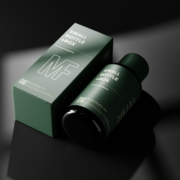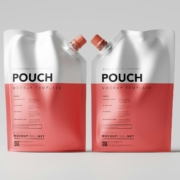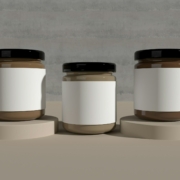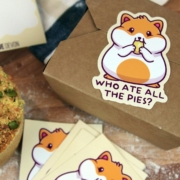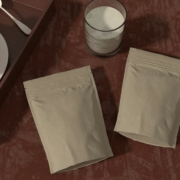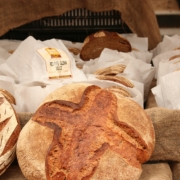Advantages of Custom Folding Cartons for Packaging
Custom folding cartons are a popular choice for businesses aiming to present their products in an attractive and practical way. These cartons are more than just containers; they shape the way customers perceive products. With their customisable designs, folding cartons help brands express their identity while ensuring products are safely secured and well-presented.
In various industries—ranging from food to cosmetics and electronics—custom folding cartons hold a special place. Their flexibility allows companies to create unique packaging that matches the specific needs of their products. This adaptability applies to everything from size and shape to the materials used, making them a favourite among diverse sectors.
Moreover, as environmental awareness grows, folding cartons offer a sustainable packaging solution. Choosing eco-friendly materials not only supports the planet but also enhances a brand’s image in the eyes of green-minded consumers. Combining aesthetics with practicality and sustainability, custom folding cartons prove to be a smart choice for modern packaging needs.
Understanding Custom Folding Cartons
Custom folding cartons are boxes crafted to fit the exact specifications of different products, making them highly desirable in packaging. They’re used across various industries, from electronics to cosmetics and food. These cartons provide a flexible approach to packaging, allowing businesses to design boxes that address their specific product needs in terms of size, shape, and branding.
The versatility of folding cartons lies in their adaptability to accommodate a wide range of product types and sizes. For fragile items like electronics, a snug fit within a sturdy carton can prevent damage during transit. Beauty products, such as lotions and perfumes, benefit from the elegant presentation a custom carton can offer. Even for food items, cartons can be designed to maintain freshness and hygiene, emphasising their pivotal role in various sectors.
Material choice in folding cartons is significant as it affects both durability and aesthetic appeal. Robust materials ensure the carton protects its contents effectively, while visually appealing finishes can enhance a brand’s image. Options like gloss, matte, or textured finishes give brands the freedom to align their packaging with their identity. Therefore, the right material choice plays a critical role in a carton’s performance and consumer perception.
Benefits of Using Greaseproof Paper with Folding Cartons
Integrating greaseproof paper with folding cartons offers an added layer of protection and sophistication. This combination ensures products, especially food items, remain fresh and presentable. Greaseproof paper acts as a barrier against oils and moisture, preventing seepage and maintaining the integrity of the carton. This enhancement is particularly beneficial for businesses relying on quality and presentation to appeal to their customers.
In bakeries, using greaseproof paper within folding cartons keeps pastries and cakes fresh. This not only preserves taste but also showcases the bakery’s branding, as the paper can be customised with logos and designs. For burger bars and cafés, the grease-resistant nature of the paper ensures that burgers and wraps stay clean and sharp, leaving a lasting impression on customers.
For charcuterie and catering businesses, custom-printed greaseproof linings elevate the presentation at events. When combined with folding cartons, these linings offer a premium look, making them ideal for weddings and other sophisticated gatherings. The added touch of elegance through branded designs can turn any event into a visual experience, enhancing the caterer’s reputation and ensuring the food looks as good as it tastes.
By using both folding cartons and greaseproof paper, businesses can remain confident that their products are protected while also boosting brand appeal. This powerful combination supports food longevity and enhances the overall consumer experience, making it a smart choice for those passionate about quality packaging solutions.
Designing Folding Cartons for Maximum Impact
Creating folding cartons that capture attention on retail shelves requires smart design elements. These elements can make all the difference in how a product is perceived by potential customers. One crucial aspect is the use of colours and artwork. Bold, vibrant colours can make a carton pop, while more subtle tones can convey elegance and sophistication. Careful colour selection can effectively convey the brand message and attract the right audience.
Beyond colour, the use of textures can set a folding carton apart from the rest. Textured surfaces add a tactile element, inviting customers to touch and engage with the product packaging. This sensory interaction can enhance the shopping experience and leave a lasting impression. Additionally, incorporating innovative die-cuts allows for unique shapes and openings, giving a carton a distinct look that stands out among traditional box designs.
Branding and customisation play a huge role in building loyalty and recognition. Personalised designs that reflect brand identity can significantly boost recall and familiarity. Adding your logo, taglines, and unique patterns onto cartons ensures that consumers remember your brand long after they’ve left the store. Investing in creative packaging solutions not only enhances product appeal but also strengthens brand loyalty.
Sustainable Practices in Folding Carton Packaging
As environmental concerns grow, sustainable folding carton packaging becomes increasingly important. Choosing eco-friendly materials helps brands align with consumer values and reduce their carbon footprint. Recyclable and biodegradable materials, such as recycled cardboard and soy-based inks, are both practical and sustainable options that maintain product integrity while caring for the planet.
Sustainable practices also resonate with consumer preferences for environmentally conscious products. Many consumers are willing to support brands that demonstrate commitment to sustainability. Adopting green packaging solutions can improve brand image and cater to environmentally mindful shoppers.
To keep costs low while still being sustainable, businesses can explore several strategies:
– Optimise design to reduce material wastage.
– Incorporate multipurpose designs that encourage reuse of packaging.
– Partner with suppliers who prioritise sustainability and offer cost-effective eco-friendly materials.
By integrating these practices, businesses can achieve both economic and environmental benefits, fostering a positive reputation and encouraging responsible consumer behaviour. Making sustainable choices in folding carton packaging is a step towards a greener future.
Conclusion
Custom folding cartons offer tremendous value as a versatile and impactful packaging option. Their ability to be tailored to unique product needs makes them ideal for many industries, delivering both functionality and aesthetics. Integrating greaseproof paper elevates their protective qualities, especially beneficial in the food industry, while sustainability remains a priority for eco-conscious consumers.
To harness the full potential of folding cartons, businesses should focus on creative design elements and sustainable practices. This strategic approach not only enhances visual appeal but also strengthens brand identity and commitment to the environment. By thoughtfully designing packaging solutions, companies can boost product marketability and consumer satisfaction.
Explore the amazing potential of custom printed folding cartons by partnering with Star Stuff Group. Our expertise in custom packaging solutions guarantees that your products not only look fantastic but are also packaged sustainably. Enhance your brand’s image today and connect with us for innovative and eco-friendly packaging!


